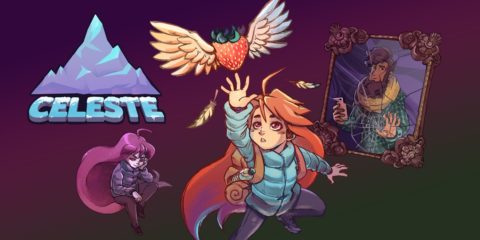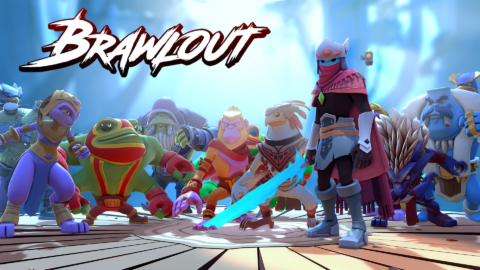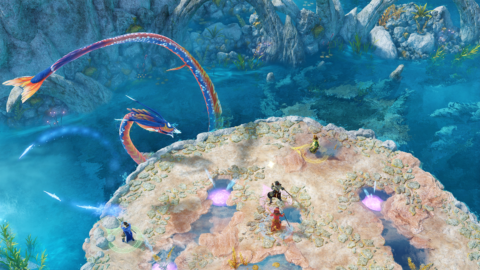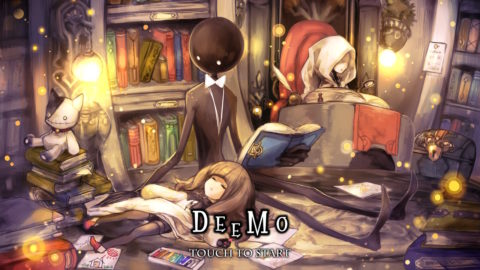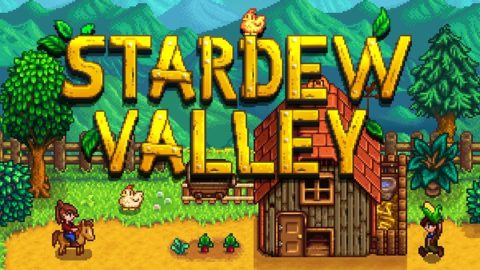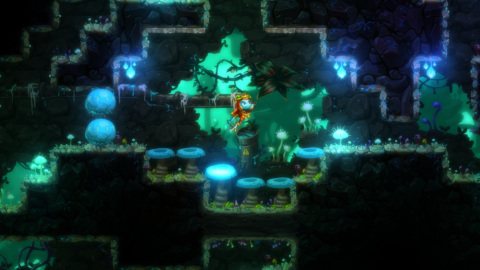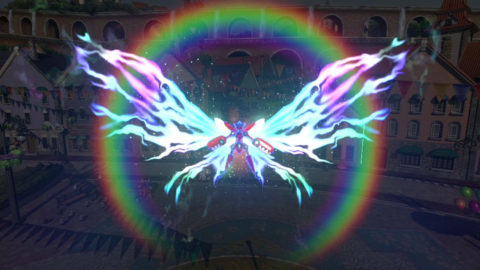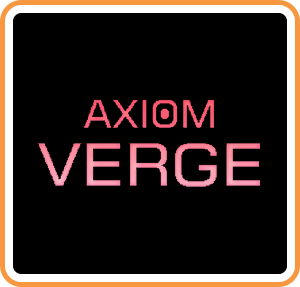
It can sometimes be difficult to analyze a game on its own merits without drawing comparisons to other similar games. While it’s not necessarily the wrong way to look at a game by any means, you run the risk of judging the game itself as “better” or “worse” than those you compare it to.
This proves especially tricky for the “Metroidvania” genre, and Axiom Verge in particular. As much an homage to this particular action adventure subset as it is a well-built entry in it, Axiom Verge draws so much from so many places, it’s almost a part of the experience just looking for it’s influences among the darkly colorful underworld it inhabits.
On its own, Axiom Verge is smartly crafted and almost instantly intriguing. Beneath that exterior is, simply put, a solid retro side-scroller with tight controls and plenty to satisfy speedrunners and classic game purists. That being said, there’s something core to the experience that may fall a little short of what action-adventure fans outside the “Metroidvania” core might expect from a modern title, vying for space on the Nintendo Switch’s rapidly expanding eShop Pixel art is a master class in the 16-bit era, and the world is at once beautiful and unsettling.
Presentation
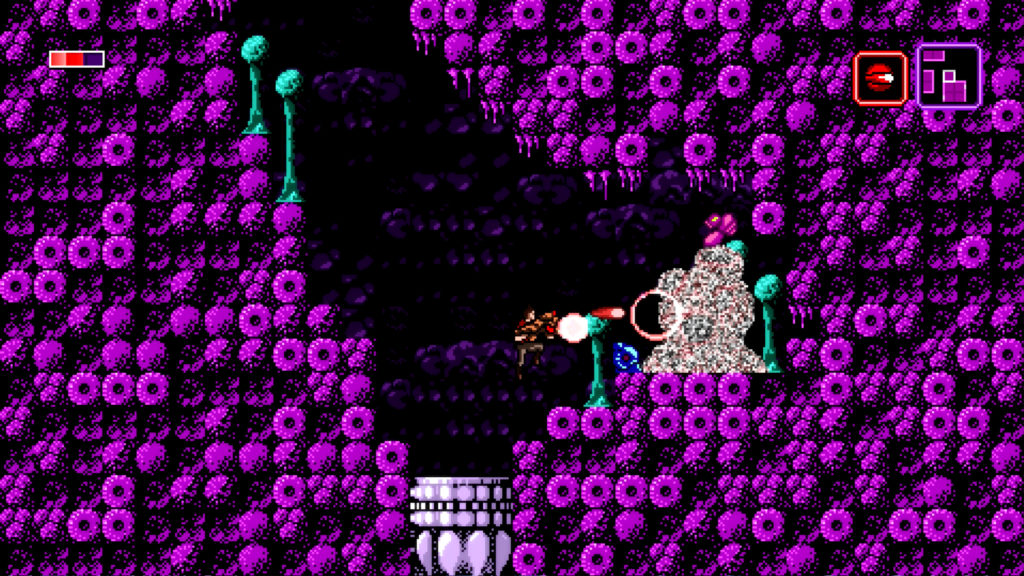
Axiom Verge wastes no time in getting players into the action, a choice whose motivation becomes clear as you begin to see how the game chooses to tell its story. Trace, a scientist working on a mysterious project in a remote facility, falls victim to a horrible accident and wakes up (or, perhaps, is resurrected,) within a strange steel device inside an underground vault.
A voice is calling out to him. There’s a single door through which to leave. He finds a strange weapon in the next room. That’s pretty much it for setup, and you’re quickly on your way to investigating just what in the world is going on. Axiom Verge walks a line, in terms of exposition, between classic text-based plot progression and the stark, minimalist approach that seems to be in fashion for dark indie titles today. It splits the difference cleanly, using dialogue boxes to provide plot points and objectives, but somewhat less in terms of setting. The world itself, on the other hand, acts as a silent appendix to that plot, with scattered, foreboding clues that something is very, very wrong here.
The world does a fantastic job of providing a vehicle for the player’s emotions. Man-made structures and natural growth blend wonderfully in some “boards,” while shifting starkly in others. You may find yourself in a cramped, steel prison full of corpses one moment, only to walk through a door into a lush, colorful underground forest. As you venture deeper, you may start to realize the dense fungi and strange plants are, in fact, growing over more steel. These little details are subtle, and the game does a great job of not trying to highlight or labor over them. There are a few small places where a clear effort was made to impress; finding that big metal face from the box art is just as impressive a moment as you’d expect.

Presenting the world this way frees players to let the world develop around them as they learn about the events at hand through dialogue with the giant “rusalki” (again, that face from the cover) and through notes scattered across the world. It’s a solid strategy, one that pushes you forward in an inherently directionless world, and promotes exploration looking for the precious scraps of story the notes provide.
The story itself is fairly compelling with a good tempo. There’s a little something here for everyone; the game’s influences shine through brightly. Hints of both Metroid and Castlevania bubble up as the plot unfolds, as do classic science fiction and fantasy elements. It’s a robust plot, sampling everything from dystopia to dimensional travel to self-reflection and dreams. With such a broad palette to paint from, I was glad to see that Tom Happ didn’t reach for minimalistic storytelling devices, in the style of Dark Souls or Hyper Light Drifter. Axiom Verge does a great job of creating a feeling of isolation and desolation without resorting to muting its characters, and it’s all the stronger for this.
It’s worth noting that Tom Happ conceptualized and developed Axiom Verge on his own, including its art direction, story, gameplay elements and soundtrack. The cohesiveness of these different elements is clear, and they work well together to establish something that feels greater than the sum of its parts. The story informs the gameplay well enough without locking players into absurdly long cutscenes or reading sessions. The Vangelis-esque soundtrack chimes in with the right amount of foreboding or epic swells when it’s needed, but stands to the side when you’re stuck in particularly tricky settings where distraction just adds to the frustration. A place for everything and everything in its place seems to be the philosophy here, and it serves that idea very well.
Gameplay
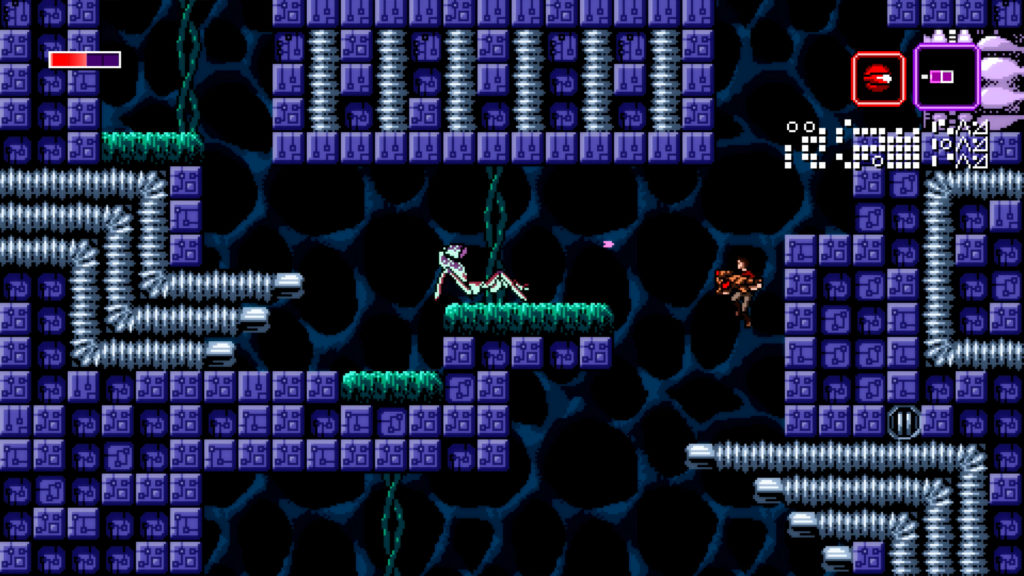
Axiom Verge‘s overall gameplay experience does fall pretty squarely into the “if you’ve played Metroidvania, you’ve played Axiom Verge” camp. I’ll admit, it was a little disappointing to realize that, given that the Switch’s action-adventure catalog is pretty full of games with pretty unique gameplay experiences. Games like Blaster Master Zero (granted, a remake of the original) and Steamworld Dig 2 have pretty unique and memorable mechanics and gameplay moments, so I suppose the bar is set pretty high for eShop titles to follow that trend.
This isn’t to say that Axiom Verge isn’t well-made. The controls are satisfying and responsive, and combat feels accurate and well-conceived. There’s plenty of variety when it comes to weapons and abilities, and the pacing at which you gain strength and new tricks doesn’t make the game feel too easy (or too difficult) too early.
Some of those abilities are fairly clever, like the Address Disruptor, do shake things up with a unique approach to both navigation and combat. With this “glitch gun,” you can alter some enemies orbits of environment in some way. Enemies become weaker or capable of destroying environments, and some blocks become passable or solid, allowing you to reach new places. Remote drones and certain types of ammo allow you to fire or teleport to places you wouldn’t normally reach, forcing you to read the terrain a bit more than you would with, say, a simple double-jump mechanic.
The abilities feel nicely varied and well-suited to the game’s challenges and setting. Many abilities don’t require ammo, either, taking away some of the more obnoxious resource management woes that always plagued my Metroid and Blaster Master runs. Enemies also provide a nice, even challenge, with some that are little more than obstacles and others that seem downright impossible to avoid or take down without seeing at least a little damage. The enemy design is unique and well-handled, with a very H. R. Giger inspired approach to make them appear appropriately off-putting.
It’s perhaps the precision of that design, and it’s adherence to the standards of its predecessors, that eventually wore me down. After taking in the game for some time, and taking time out to appreciate it’s solid design, I started to realize that I was, in fact, a bit bored with the whole ordeal. For all it’s finer points there’s just not much Axiom Verge does to make the combat or the navigation feel significant. Everything feels a bit too much like a simple vehicle to drive a plot. While it does this job well, it never seems to look beyond the next goalpost to find something more impactful.
It’s here that I feel forced to compare the game with others of its kind. I often found myself missing the often clever or satisfying mechanics of games available alongside Axiom Verge, or even from those it draws inspiration from. Boss battles in Axiom Verge are disappointingly standard jump-and-shoot affairs and don’t do a lot to really force players to adapt or evaluate their approach. Games like Blaster Master do this extremely well within their limited feature set, creating tense moments that require different approaches each time.
Navigation is similar in that it does exactly what you’d expect, but little more than that. I often found myself in the classic Metroid dilemma of wandering through an area, only to find I had no way back. Not the end of the world, as I immediately got a glimpse into a future where I’d get some modified high- or double-jump tool that would allow me to reach it. Even the concept of “shooting around corners” has been handled more with more excitement in games like Azure Striker Gunvolt.
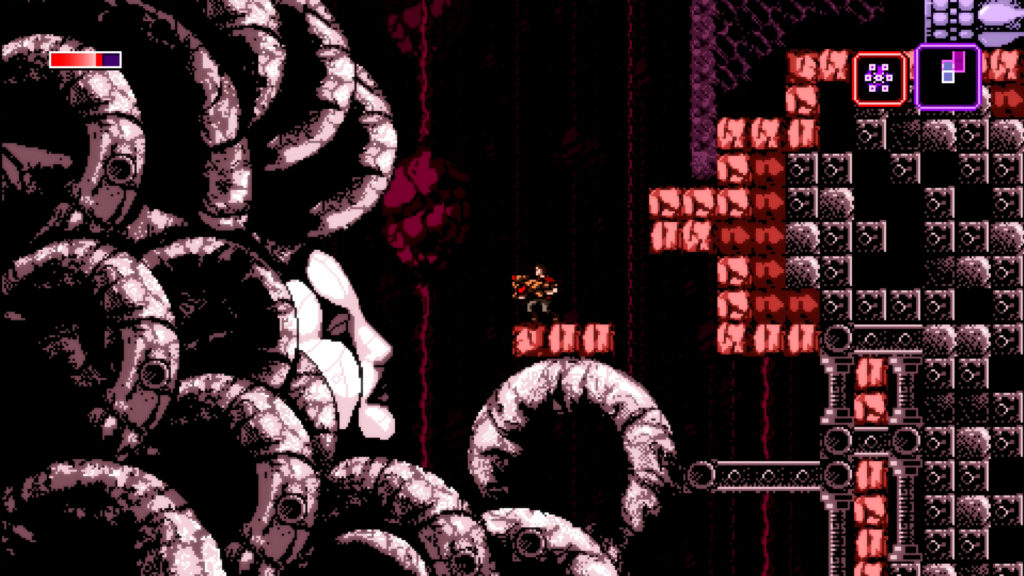
It’s a difficult problem to address, in that it’s only really a problem if you don’t enjoy that particular playstyle. Fans painfully aware of the post-SNES era’s lack of solid first-party Metroid-vania will (and have, on PC and other consoles) find everything they miss here, with just enough unique aesthetic to keep things fresh. On the Nintendo Switch, in particular, the ability to bring that high-resolution cavern-crawling out of the living room is just more icing on the cake. Still, players that have burned through what’s available on the eShop might not find enough here to keep them occupied for long, and might even get a bit burned out before the end.
Worth mentioning are so great quality of life additions catering to speedrunners and map-makers. Axiom Verge‘s menu system is top-notch, with the ability to set up to 2 “reminders” on particular boards without any muss or fuss. There’s a “speedrun” mode that tracks time in-game, and several sections appear to be designed specifically with this in mind. Breakable blocks exist in patterns that don’t really do much for the casual platformer but could shave whole seconds off later if you take them out early on and open up a quick path. Things like this are just more evidence of the thought and care that went into the game’s development, and an appreciated nod toward those fans likely to get heavily invested in the experience.
Perchance to Dream
Axiom Verge excels at what it is; a straightforward exploration action adventure with a setting and story that reach well beyond many of its predecessors, but one that recalls the little details that made its genre what it is today. It’s worth the price of admission to get a look at what’s on offer here and to let yourself get swept into a world that is equal parts unique and familiar.
While I do wish there was a bit more on the plate in terms of gameplay, what is there is handled deftly and with appropriate care and attention. It may not be enough to keep eShop browsers invested beyond the first few hours, but hardcore fans itching to take their dungeon-running show on the road should find the latest port of Axiom Verge more than holds up to previous versions. Fans still looking to add this one to their library would do well to reach for their Switch first.
Review Copy Provided by Thomas Happ Games LLC
